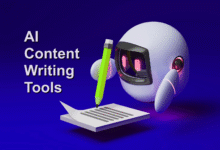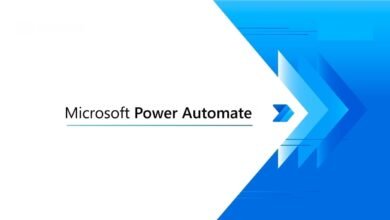IoT in Workplace: The Future of Smart Office Productivity
IoT in Workplace transforms offices with smart automation, boosting productivity and security. Discover the future of connected workspaces.

IoT in Workplace is revolutionizing how businesses operate, bringing unprecedented efficiency and connectivity to modern offices. By integrating smart devices, sensors, and automated systems, workplaces are becoming more responsive, data-driven, and employee-friendly. From intelligent lighting and climate control to advanced security and workflow automation, IoT is shaping the future of office productivity. This is explores how enhances IoT in Workplace efficiency, the key technologies driving this transformation, and the challenges organizations may face in adoption.
As companies strive for higher productivity and employee satisfaction, IoT offers solutions that optimize energy usage, streamline operations, and foster a collaborative environment. However, with these advancements come concerns about data security, implementation costs, and workforce adaptation. By understanding the potential and limitations of IoT in Workplace, businesses can make informed decisions to create smarter, more sustainable offices.
IoT in Workplace
The Role of IoT in Enhancing Workplace Efficiency
The integration of IoT in Workplace environments is transforming traditional offices into dynamic, data-driven spaces. Smart sensors monitor occupancy, adjusting lighting and temperature in real-time to reduce energy waste while maintaining comfort. Automated meeting room bookings, powered by IoT-enabled systems, eliminate scheduling conflicts and improve space utilization. Additionally, IoT-driven analytics provide insights into employee behavior, helping organizations optimize workflows and reduce inefficiencies.
Key IoT Technologies Shaping Smart Offices
Several cutting-edge technologies underpin the success of IoT in Workplace settings. Edge computing processes data locally, reducing latency and improving real-time decision-making. Cloud platforms store and analyze vast amounts of IoT-generated data, enabling businesses to identify trends and make strategic adjustments. Artificial Intelligence (AI) enhances IoT systems by learning usage patterns and automating repetitive tasks, such as inventory management and energy distribution. 5G networks further amplify IoT capabilities by providing faster, more reliable connectivity for a multitude of devices.
Challenges in Adopting IoT for Workplace Productivity
High Initial Implementation Costs
Deploying IoT infrastructure requires substantial investment in sensors, smart devices, network upgrades, and cloud platforms. Small and medium-sized enterprises (SMEs) may struggle with the upfront costs, including installation, integration, and employee training. Ongoing maintenance and software updates add to the long-term expenses.
Cybersecurity & Data Privacy Risks
IoT devices collect vast amounts of sensitive data, making them prime targets for cyberattacks. Weak encryption, unsecured networks, and outdated firmware can lead to data breaches. Companies must implement robust security protocols, such as multi-factor authentication (MFA) and end-to-end encryption, to protect employee and corporate data. Compliance with regulations like GDPR and CCPA adds another layer of complexity.
Integration with Legacy Systems
Many offices still rely on outdated Information technology infrastructure that may not support IoT connectivity. Integrating new IoT devices with legacy systems can lead to compatibility issues, requiring costly middleware or complete system overhauls. Interoperability between different IoT platforms (e.g., Google Workspace vs. Microsoft 365) remains a challenge.
Employee Resistance
Workers may resist IoT adoption due to fears of job displacement, increased surveillance, or a steep learning curve. Transparent communication about IoT benefits, along with proper training programs, is essential to ease the transition. Privacy concerns related to tracking devices (e.g., occupancy sensors, wearables) must be addressed to gain employee trust.
Network Reliability Issues
As IoT ecosystems expand, networks must handle increasing data traffic without latency. Poor Wi-Fi coverage, bandwidth limitations, and unreliable connectivity can disrupt IoT operations. Businesses need scalable cloud solutions and edge computing to process data efficiently. Downtime due to network failures can severely impact productivity.
Data Overload
IoT generates massive amounts of real-time data, but extracting actionable insights requires advanced analytics tools. Without proper data management strategies, companies risk information overload. Investing in AI-driven analytics and hiring skilled personnel to interpret IoT data is crucial for effective decision-making.
The Future of IoT-Driven Smart Offices
Intelligent Workspace Automation
IoT enables offices to automate routine tasks, such as lighting, temperature control, and meeting room bookings. Smart sensors detect occupancy and adjust environmental settings in real time, reducing energy waste while ensuring optimal comfort. Automated workflows minimize manual intervention, allowing employees to focus on high-value tasks.
Enhanced Employee Productivity
Wearable IoT devices and smart desks monitor posture, movement, and even stress levels, promoting healthier work habits. AI-powered assistants schedule tasks, set reminders, and streamline communication, reducing cognitive overload. Personalized workspaces adapt to individual preferences, boosting productivity and job satisfaction.
Predictive Maintenance
IoT-connected office equipment (printers, HVAC systems, elevators) can predict failures before they occur, minimizing downtime. Sensors track asset usage, helping companies optimize resource allocation and reduce operational costs. Maintenance alerts are sent automatically, ensuring seamless office operations.
Advanced Security
Biometric authentication, smart surveillance cameras, and IoT-based access systems enhance workplace security. Facial recognition and mobile-based entry systems eliminate the need for physical keys or cards. Real-time monitoring detects anomalies, preventing unauthorized access and data breaches.
Data-Driven Decision Making
IoT collects vast amounts of workplace data employee movement, space utilization, energy consumption—providing actionable insights. AI-powered analytics help businesses optimize office layouts, improve workflow efficiency, and reduce overhead costs. Companies can make informed decisions based on real-time data trends.
Seamless Hybrid Work Integration
With hybrid work becoming the norm, IoT bridges the gap between remote and in-office employees. Smart scheduling systems manage desk bookings, while IoT-enabled video conferencing ensures smooth virtual collaboration. Digital twins (virtual office replicas) help remote workers navigate physical office spaces virtually.
Sustainability
Smart lighting, HVAC, and power management systems reduce energy consumption by adjusting usage based on occupancy. IoT-driven sustainability initiatives help companies meet ESG (Environmental, Social, and Governance) goals by minimizing carbon footprints. Renewable energy integration (solar-powered sensors, energy-efficient devices) further enhances green office initiatives.
The Rise of AI
Artificial Intelligence (AI) enhances IoT by learning user behavior and automating complex tasks. Voice-controlled assistants, smart meeting rooms, and AI-driven chatbots improve workplace interactions. Machine learning algorithms optimize IoT networks for better performance and security.
Challenges
Despite its benefits, IoT in Workplace adoption faces hurdles such as cybersecurity risks, high implementation costs, and employee resistance. Companies must invest in robust encryption, employee training, and scalable IoT infrastructure to ensure smooth integration.
Read More: The New Remote Work Stack: Tools Every Team Needs
Conclusion
IoT in Workplace environments is undeniably the future of smart office productivity, offering unparalleled efficiency, cost savings, and employee satisfaction. By leveraging connected devices and intelligent automation, businesses can create workspaces that adapt in real-time to the needs of their workforce. However, successful implementation requires addressing security concerns, ensuring interoperability, and fostering a culture of innovation among employees.
As technology continues to evolve, the potential for IoT in Workplace dynamics grows exponentially. Companies that embrace these advancements early will gain a competitive edge, driving productivity and sustainability in the modern office. The journey toward a fully integrated smart workplace may present challenges, but the long-term benefits make it a worthwhile investment for forward-thinking organizations.
FAQs
What is IoT in Workplace?
IoT in Workplace refers to the use of interconnected smart devices and sensors to automate and optimize office operations, enhancing productivity and efficiency.
How does IoT improve office productivity?
IoT improves productivity by automating routine tasks, optimizing energy usage, enabling predictive maintenance, and providing data-driven insights for better decision-making.
What are the security risks of IoT in offices?
Security risks include data breaches, unauthorized access to connected devices, and vulnerabilities in IoT networks, requiring strong encryption and cybersecurity measures.
What are the costs of implementing IoT in Workplace?
Costs vary based on scale but include expenses for IoT devices, software, infrastructure upgrades, employee training, and ongoing maintenance.
Can IoT in Workplace enhance employee satisfaction?
Yes, IoT enhances satisfaction by creating a more comfortable, efficient, and responsive work environment, reducing frustrations related to outdated systems.












2 Comments